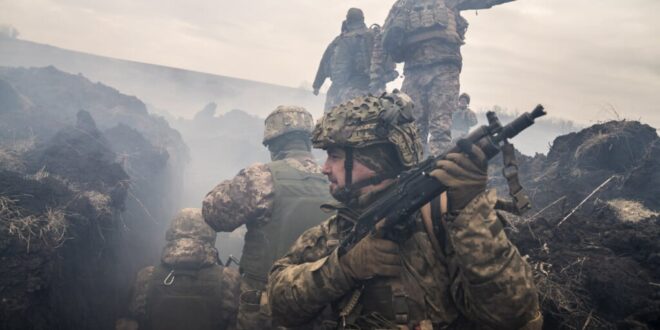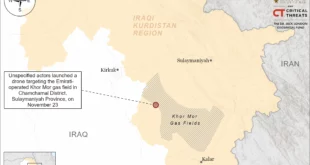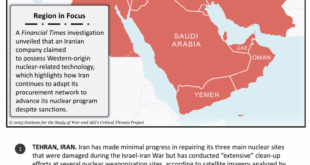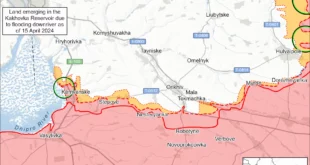A long-delayed bill on mobilization passed its second and final reading by the Ukrainian parliament on Tuesday. Although Kyiv punted on the contentious issue of demobilizing troops currently in service, the legislation can help Ukraine address its pressing shortage of manpower. But Kyiv’s delay in passing the law, coupled with shortfalls in Western ammunition supplies, has given Russia an opportunity to make gains. Ukraine will now have to mobilize aggressively to hold the Russians at bay.
Ukraine’s Manpower Shortage
When Russia invaded in February 2022, the Ukrainian military received more volunteers than it could handle. But as the conflict dragged on, Kyiv largely exhausted its pool of volunteers. Ukraine is now struggling to mobilize enough troops. Recruitment officers have resorted to issuing summonses on the street and chasing down draft dodgers.
Many Ukrainian units are severely understrength. This is particularly true for infantry units, forcing Ukraine to reassign personnel from other specialties. The manpower shortfall means that while soldiers may receive brief vacations, Kyiv cannot conduct long-term force rotation or demobilization. Many troops have been fighting for over two years, resulting in exhaustion and sinking morale. Some soldiers report having to man frontline positions for over a week at a time with no break. “No matter how much help we get, how many weapons we have — we lack people,” Ukraine’s Ground Forces commander said on Monday.
The Russian military also experienced a serious manpower shortage during the war’s first year. But Russia is now in a more comfortable position, thanks in part to its larger population. After Ukrainian forces tore through sparsely manned Russian lines in Kharkiv Oblast in September 2022, Moscow began mobilizing later that month. This belated decision allowed Russia to stabilize its lines. While the Kremlin has since refrained from further forced mobilization, Moscow has proven surprisingly successful in recruiting volunteers. This has enabled Russia to replace losses, generate some additional combat power, and expend an enormous number of soldiers in “meat” assaults. Like Ukraine, however, Russia currently lacks enough troops to rotate forces.
Last December, President Volodymyr Zelenskyy said the Ukrainian military had proposed mobilizing 450,000 to 500,000 more men. This request reportedly was an issue of contention between Zelenskyy and his top general, Valerii Zaluzhnyi, prior to the latter’s ouster in February. In late March, Zaluzhnyi’s successor, Colonel-General Oleksandr Syrskyi, claimed the mobilization quota “was significantly reduced” thanks to an audit that had resulted in “thousands” of non-combat personnel being transferred to combat roles. Still, there is no escaping the fact that Ukraine needs to mobilize many thousands of additional troops.
In addition to the number of soldiers, an important issue is age. Ukraine has relied largely on older men to replenish its ranks. The average age of Ukrainian troops at the front is over 40 years old. (Russian volunteer and mobilized troops are often on the older side, too.) Kyiv has been reluctant to mobilize young men because the country already has relatively few of them. Losing more could jeopardize its economy and future. But older soldiers tend to be less physically suited to the rigors of battle. This is especially problematic for offensive operations, in which dismounted infantry often must travel multiple kilometers on foot.
The New Legislation
Despite its urgent manpower requirements, Kyiv dragged its feet in passing the mobilization law. The government submitted a first draft in December, only to withdraw it following political backlash. A revised version was submitted in late January and passed its first reading in February. But members of parliament proposed over 4,000 amendments, slowing the process down. Zelenskyy has seemed reluctant to throw his full political weight behind the legislation, at times distancing himself from its most controversial elements.
Although the new law does guarantee short-term leave, the parliament — at Syrskyi’s request — removed a provision that would have allowed troops to demobilize after 36 months. The Ukrainian government is now supposed to craft a separate bill tackling that issue. But it seems unlikely to move forward anytime soon given that the military clearly worries it cannot afford large-scale demobilization.
According to a February 2024 survey, the lack of a clear timeline for demobilization is a major deterrent to prospective troops. It makes Ukrainians less willing to volunteer and more likely to dodge the draft, compounding the manpower shortage that prevents demobilization in the first place. In the new legislation, Kyiv refrained from imposing criminal penalties on draft dodgers.
Concerns about insufficient training may also undermine the mobilization effort. As the February 2024 survey indicated, reports about troops being sent to the front after just weeks or even days of training have fueled draft dodging. In fact, respondents ranked this issue as the second-biggest deterrent to mobilization, right behind insufficient material support. A previous draft of the new law required two to three months of training for mobilized troops. The updated version appears to have dropped that requirement, although the final text has not yet been made public.
The new law does, however, grant troops who sign contracts with the Ukrainian Defense Ministry the right to pick which units they join. In addition, the latest version removed a controversial provision that would have allowed people to be exempted from the draft if they or their employer paid a levy. The law will also require all men aged 18 to 60 to update their military registration data and carry related documentation, facilitating mobilization.
Critically, under the new legislation and another law that Zelenskyy signed last week, Ukraine is lowering the minimum age for mobilization from 27 to 25 years old. The new age floor, while still remarkably high, is politically controversial. Zelenskyy had sat on that other bill for 10 months. The president also signed separate legislation last week on establishing a digital register of mobilization-eligible men, passed by parliament in mid-January. Moscow took a similar step back in fall 2022.
Russia’s Window of Opportunity
Ukraine’s shortages of manpower and artillery shells have allowed Russian forces to make incremental gains in recent months, albeit at high cost. Kyiv’s delay in passing the mobilization bill has exacerbated these challenges. So, too, have the European Union’s underwhelming ammunition deliveries and the U.S. Congress’s refusal to pass aid funding.
The new law will take time to impact the battlefield. The bill will now go to the speaker for his signature and then to the president’s desk. After Zelenskyy signs it, the legislation will take one month to come into force. Training draftees and forming combat-ready units will take longer. As Zaluzhnyi has noted, Ukraine’s “capacity to train reserves on [its] own territory is also limited.” Many of the new soldiers will have to be trained under UK and EU programs, which together can train maybe 4,000 to 5,000 troops per month.
Most important, Kyiv must summon the political will to actually use its new authority to mobilize younger men. Whether it will do so remains to be seen.
Regarding ammunition, a Czech-led initiative to procure additional shells for Ukraine will help. So will the potential passage of the U.S. aid bill. Ukraine’s ongoing effort to construct fortified defensive lines, belatedly launched late last year, can further stiffen its defenses. And although Russia continues to recruit more men and form additional units, it has so far proven unable to regenerate force quality, undercutting its offensive potential.
In short, this year offers Russia its best chance to take more territory, assuming U.S. aid continues past the November election. But if both Kyiv and the West play their cards right, they can prevent major Russian advances.
 Eurasia Press & News
Eurasia Press & News



